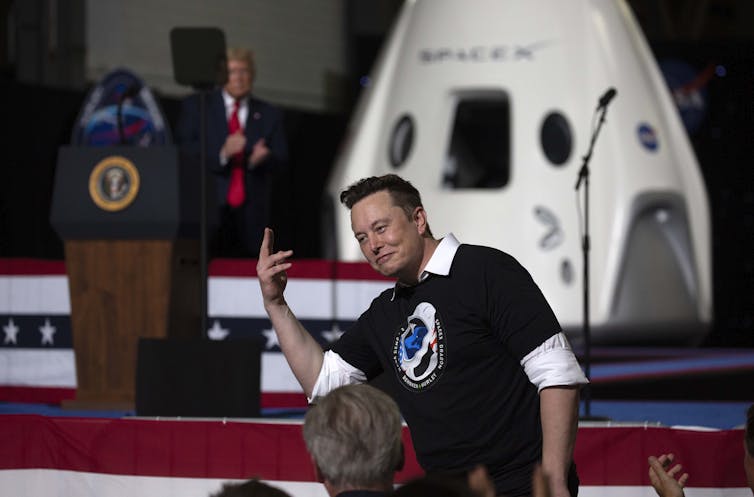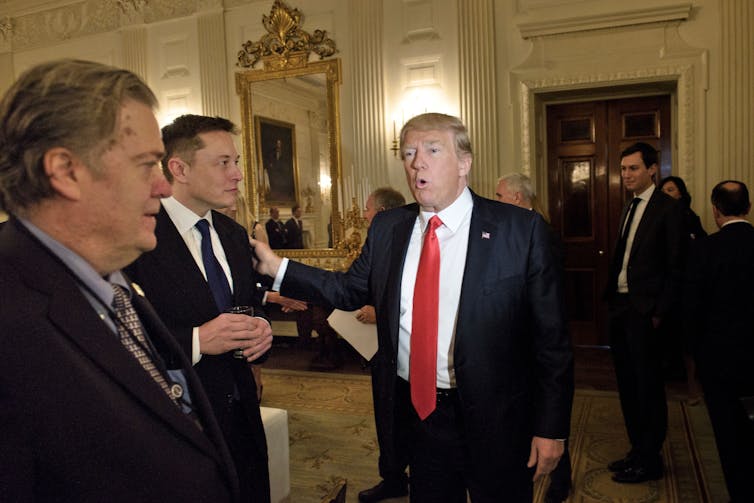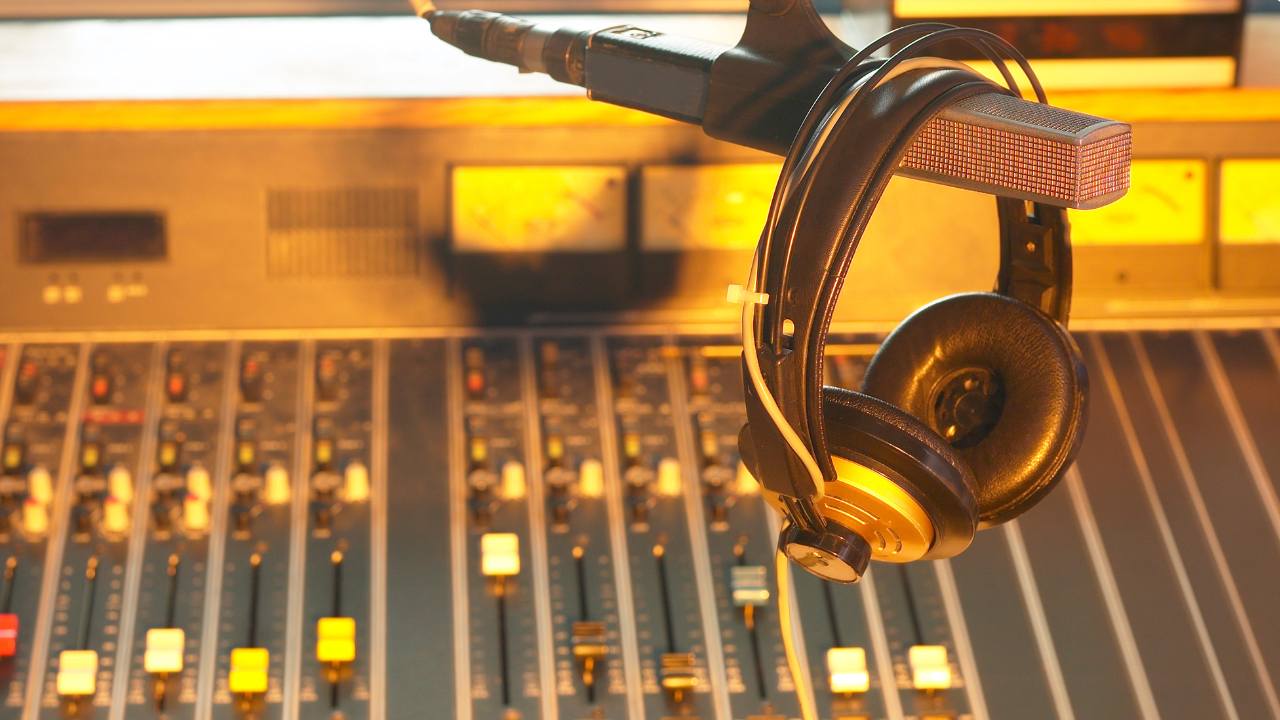
Saul Martinez via Getty Images
Svetla Ben-Itzhak, Johns Hopkins University
Elon Musk officially endorsed Donald Trump for president of the United States on July 13, 2024, shortly after Trump survived an assassination attempt. Musk, a billionaire technology entrepreneur, has made groundbreaking contributions in multiple industries, particularly space travel and exploration.
Even before Musk’s endorsement, Trump was reportedly considering giving the billionaire an advisory role if elected for a second term. With Musk’s public support and financial backing, it now seems even more likely that Trump would offer him an official position in his administration.
As someone who studies space and international relations, I am interested in how Musk might influence U.S. space policy if Trump wins in November. Their partnership could significantly shape the future of U.S. space exploration and defense, as well as shift the balance of power between the public and private sectors in space.
Current US space policy
A nation’s space policy reflects its vision and priorities for outer space. U.S. space policy – a mix of continuity from past administrations and recent directives – is outlined in key documents, including the U.S. National Space Policy, the U.S. Space Priorities Framework, Space Policy Directives and other official publications.
Current space policy emphasizes maintaining U.S. leadership in space, protecting U.S. space assets and working with commercial and international partners to promote safe, secure and responsible behavior in space. Its key elements include growing the American commercial space sector and returning astronauts to the Moon.
Musk’s company SpaceX has been instrumental in advancing these goals, supporting both NASA and the U.S. Space Force – the newest branch of the U.S. military – in their missions. SpaceX’s innovations, such as the reusable Falcon 9 rockets, the Starlink satellite internet and the powerful Starship, have dramatically transformed access to and use of outer space.
The 2016-2020 Trump administration advanced many of the current U.S. space policy goals, some of which closely align with Musk’s own ambitions for space.
Space synergy: Trump’s and Musk’s shared ambitions
Trump and Musk agree on three main objectives in space.
First, both are committed to human expansion beyond Earth. Trump’s Space Policy Directive 1, signed on Dec. 11, 2017, set the U.S. on a course to return astronauts to the Moon and establish a permanent presence there, followed by human missions to Mars and beyond.
This directive aligns with Musk’s vision of colonizing Mars, which is guiding the development of Starship: the most powerful and massive spacecraft ever built. Designed to be fully reusable, Starship will carry large payloads and be capable of deep space travel – including lunar landings and journeys to the red planet.

AP Photo/Eric Gay
NASA’s Artemis program, which originated from Trump’s Space Policy Directive 1, plans to return humans to the Moon by 2026. To achieve this goal, NASA partnered with SpaceX in 2021 to develop the Starship Human Landing System spacecraft, which will transport astronauts and cargo from lunar orbit to the Moon’s surface and back.

Second, both Trump and Musk support commercial involvement in space. Trump’s Space Policy Directive 1 specifically calls for commercial and international partnerships, marking a shift from the previous administration. President Joe Biden has continued this push to develop a robust commercial U.S. space sector.
This recognition of the pivotal role that private industries can play in space exploration aligns with Musk’s record as an entrepreneur and innovator. Under Musk, SpaceX has not only provided essential services to NASA, but it has also driven innovation to new heights. The company has significantly lowered the cost of space ventures and made space more accessible to a broader audience of space explorers.
Third, both favor deregulation. Trump’s administration sought to reduce regulatory barriers through directives like his Space Policy Directive 2, which aimed to streamline commercial space regulations to encourage faster growth and innovation in the private space industry.
Even so, Musk has often found existing space regulations too restrictive. He has frequently challenged U.S. regulators – such as the Federal Aviation Administration which oversees launch and reentry requirements – and has called for “comprehensive deregulation.”
Contrasting space visions: Musk vs. Trump
In terms of space priorities, Musk differs from Trump in three main aspects.
First, Musk is focused on the long-term goal of making humanity a multi-planetary species, starting with colonizing Mars and establishing a self-sustaining human presence there.
In contrast, Trump’s approach to space emphasized asserting U.S. leadership by achieving near-Earth and near-term milestones, like returning Americans to the Moon. Consequently, during his presidency, Trump prioritized the Artemis program and launched the Space Force to safeguard U.S. capabilities in space.
Second, while both value the private sector, Musk, through SpaceX, has pushed for cost reduction, innovation and rapid iteration in space technology. SpaceX’s Falcon rockets have reflown some 300 times, significantly cutting spaceflight costs. SpaceX also achieved major milestones in commercial spaceflight, including becoming the first private company to send astronauts to the International Space Station.
In contrast, to fund the Artemis program, Trump called for a significant increase in NASA’s budget. This move emphasized investing in government-led programs to achieve space objectives.
Third, Musk appears more open to sharing patented information, even with his competitors. He famously stated that “patents are for the weak,” arguing that they block innovation and stifle progress. While Musk continues to patent inventions, including those related to SpaceX, he has also expressed support for fostering innovation through openness and collaboration.
In contrast, Trump’s space policy focused on national security and strategic competition. The creation of the Space Force reflected Trump’s view of space as a contested, military domain where the U.S. must protect its assets and maintain a competitive advantage.
Musk’s likely impact on future US space policy
If Musk were to take on a larger, formal role in a second Trump administration, he would likely push for ambitious space missions and timelines. The initial focus would continue to be on the Artemis program and lunar settlements, with increased attention eventually shifting to human missions to Mars and beyond.

Brendan Smialowski/AFP via Getty Images
A Trump-Musk partnership would likely further advance the commercialization of space. Musk could advocate for more deregulation of space activities, potentially challenging existing safety and security standards. While Musk is also likely to push for cost reduction, innovation and efficiency, it would be interesting to see how his efforts would fare against government bureaucracy.
Whether Musk would affect U.S. space policy regarding international competitors like China remains uncertain. Musk’s presence in a second Trump administration could, however, shed light on whether commercial space actors can help decrease tensions between countries in space.
Musk is not a politician. He is a visionary and problem solver focused on the future of humanity. These qualities are also most likely to shape his impact on U.S. space policy.![]()
Svetla Ben-Itzhak, Assistant Professor of Space and International Relations, Johns Hopkins University
This article is republished from The Conversation under a Creative Commons license. Read the original article.
























































